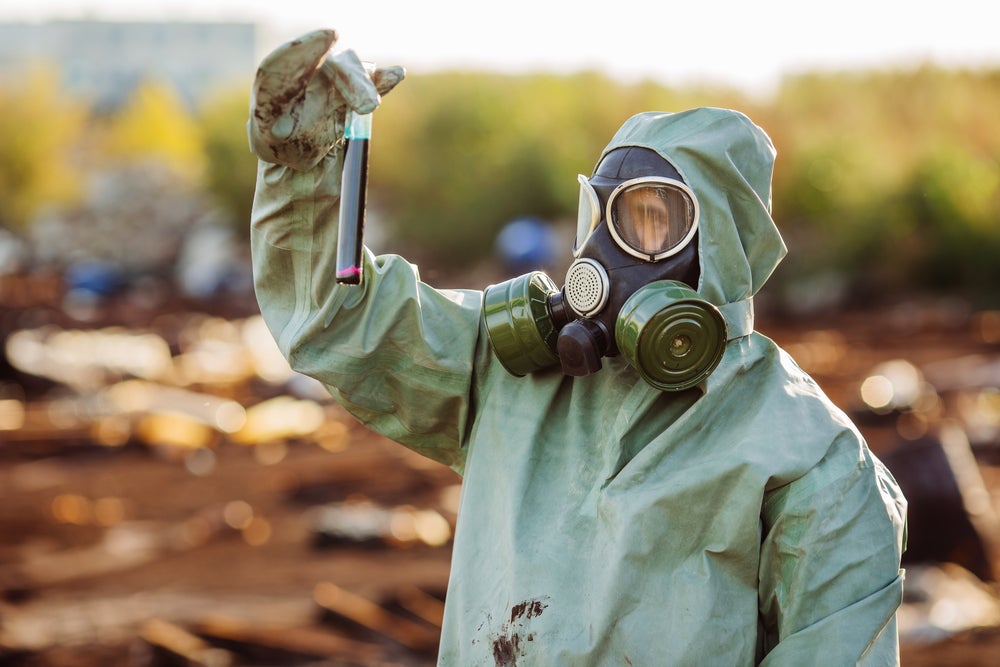Seven Ways This New Chemical Law Will Make You Safer
Updates to the chemical safety law known as TSCA will help to better protect Americans from toxic chemicals.

This page was published 9 years ago. Find the latest on Earthjustice’s work.
[Editor’s note: Recently, the EPA announced that it will move quickly to evaluate five persistent, bio accumulative and toxic chemicals under the updated chemical safety law, known as the Toxic Substances Control Act, which mandates that the agency review existing chemicals under specific deadlines. Under the old law, only five of 62,000-plus chemicals on the market have been banned since 1976.]
Are you in the market for a new sofa or cookware set that isn’t full of a bunch of toxic chemicals? Until recently, consumers were pretty much on their own when it came to finding products that were safe for them and their families. That’s because the federal law responsible for ensuring chemical safety was notoriously weak and woefully outdated. Known as the Toxic Substances Control Act (TSCA), the law was so bad that Congress finally agreed to update it last summer—largely with the blessing of both the chemical industry and public health advocates.
The new bill overhauls TSCA and gives the EPA more authority to regulate chemicals in the U.S. marketplace. It does have some flaws (more on that later), but overall it’s a huge step forward in ensuring that the products we use and the chemicals in them are a whole lot safer. Here are seven reasons why.
- The chemical industry can no longer treat people as guinea pigs.
When legislators first enacted TSCA in 1976, they grandfathered in the approximately 62,000 chemicals already on the market. This semi-truck-sized exemption—a boon for the industry—meant that these chemicals got a pass on safety testing. Now, these grandfathered chemicals—such as flame retardants, phthalates and formaldehyde—are subject to testing, risk evaluation and regulation for the first time ever. Any new chemicals must also undergo safety review before they go on the market.
- The EPA has more muscle to ensure chemicals are safe.
The EPA used to have to jump over some very high hurdles to get a chemical manufacturer to safety test its product, including determining that a chemical may be unreasonably risky before it could require further testing. This immobilizing Catch-22 meant that the overwhelming majority of chemicals used today have never undergone stringent safety testing. Under the new law, the EPA has much stronger authority to require manufacturers to conduct studies on a chemical’s toxicity and exposure limits.
- The U.S. can finally ban chemicals long scorned by other countries.
Back in 1989, the EPA tried to ban most products that contain asbestos, but it ultimately failed because the old rule required the agency to find the “least burdensome” way to protect people from asbestos. Since then, more than 50 countries have managed to ban the cancer-causing chemical, while the U.S has sat on its heels. Now that lawmakers have removed the “least burdensome” requirement, the agency has a fighting chance to ban notoriously harmful chemicals like asbestos.
- The EPA has to lick its wounds and move on.
After the asbestos fiasco, the EPA pretty much gave up on attempting to ban the use of chemicals under TSCA. But under the new law, the EPA can no longer sit idle. The agency must evaluate the safety of a minimum number of substances at all times—10 chemicals to start, and within 3 years, 20 chemicals. If the evaluation shows a substance poses an unreasonable risk, the EPA must regulate it. Many groups want notoriously bad chemicals like lead and styrene to be first on the list.
- Corporate profits will no longer outweigh public health, mostly.
The EPA can no longer consider costs when it decides if a chemical presents an unreasonable risk—it has to base its decision solely on health. However, the agency must consider costs when it adopts ways to manage the risk of a specific chemical. Earthjustice believes the EPA isn’t required to select the most cost-effective option in this case, but the chemical industry may argue otherwise.
- Overburdened and vulnerable communities may finally get some relief.
The new law provides hope for communities saddled with chemical exposures from multiple sources—like a town that sits next to a coal plant, recycling facility and major highway. In determining a chemical’s risk, the EPA must consider the chemical’s impact to overburdened communities or to people especially susceptible to chemical exposure, like children, pregnant women and the elderly. If a chemical poses unreasonable risks to these subpopulations, the EPA must regulate it.
- Chemical companies will find it harder to hide their chemical secrets.
Chemical companies used to prevent the public from getting access to information about their chemicals by claiming it was “confidential business information” (CBI). The EPA rarely scrutinized or challenged these claims or even required proof that the CBI claims were legitimate. This lackadaisical approach led to skyrocketing CBI claims, and it left the public in the dark about the chemicals in their products. Now, the EPA must scrutinize most new claims, which now expire after 10 years.
Over the next year, the public will have many opportunities to strengthen the new TSCA. For now, tell the EPA to keep our kids safe from one of the most notoriously harmful chemicals on the market: lead.
Take Action! Stop Neurotoxic Lead Exposure in Children!
Earthjustice’s Toxic Exposure & Health Program uses the power of the law to ensure that all people have safe workplaces, neighborhoods, and schools; have access to safe drinking water and food; live in homes that are free of hazardous chemicals; and have access to safe products.